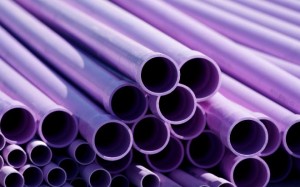Across the western United States, both policymakers and citizens must change their ways to conserve what little water remains in the rivers, streams and aquifers. Here in California, we are bearing the brunt of the drought’s effects. Earlier this week, the California State Water Resources Control Board imposed a series of new sanctions to combat residential water waste. According to the Los Angeles Times, the Board gave local cities the power to impose fines of up to $500 per day for people who allow runoff from outdoor sprinklers, hose down sidewalks or driveways, or who wash their car with a hose that does not have a nozzle with a shutoff valve. Clearly the drought has gotten to a point where we need to think more creatively about finding more reliable water supplies for the long-term. Until this point, the general public has had an aversion towards the large-scale use of recycled water. But could the drought change this mindset? In this piece, I will discuss the potential uses for this sometimes overlooked water supply and address how the drought may change this mindset.
Across the Western United States, twelve states face severe drought. In states such as California and Nevada, the entire landmass of both states face severe to exceptional drought. According to the US Drought Monitor, parts of Texas, Oklahoma, Nebraska, Colorado, New Mexico, Arizona, Idaho, Utah and Oregon face extreme drought. Please see the map below for the full US map. In many of these areas, both surface and groundwater supplies are dwindling. As I wrote in my last Post, California has curtailed surface water rights in the Northern part of the state to protect what little water remains in the rivers and streams. However, in this state of drought emergency, many areas are overlooking one of the most drought-proof water supplies: recycled wastewater.
Simply put, since the creation of the world, no new water has been created. When residents that are connected to sewer systems use water, the sewerage pipes run to a treatment plant. Through multiple steps, the solids are separated from the water and the water is treated. At the end of the process, the solids are dried and turned into compost. The water, though not fit at that point for human consumption, is either piped to end users for irrigation and industrial uses or put back into the water table. The water that re-enters the aquifer gets further cleaning naturally as it settles, and the water becomes part of the basin that lies under the water treatment plant. Over the years, there has been some aversion from citizens to using recycled water on a large scale. Slowly but surely however, this view of recycled water is changing.
In years past, many jurisdictions with recycled water programs had a hard time convincing the public of the benefits of using this water source. Citizens mostly have safety concerns over the use of this water. While jurisdictions only use recycled water for irrigation or industrial purposes, citizens across California have expressed concern over accidents that could happen if humans or pets accidentally consume the water. Opponents of recycled water use have also penned the term “toilet to tap” to describe the process of recovering recycled water. The fear of the potential problems recycled water may cause is slowly subsiding however as water supplies dwindle and people understand the value of this underutilized water source.
Have you seen pipes of this color in your neighborhood or city? If so, some of your irrigation or industrial customers are using recycled water. From my research, the use of purple pipe began at the Irvine Ranch Water District in the early 1980s. The engineers there first began to use recycled water then and wanted to use a unique pipe color to distinguish between potable and non-potable water resources. Since then, the use of reclaimed water has increased in areas that can provide the service. Here in Southern California, some cities mandate the use of recycled water on any new landscape medians. Golf courses and other high water users such as parks and recreation districts also use recycled water for irrigation. Other cities such as Yucaipa, Victorville and Irvine mandate that new specific plans for development (usually home tracts of over 200 lots or 200,000 SF of retail or industrial space) must have dual-plumbed lines. The potable water line will serve the home or office, and the purple pipe will supply water for the lots’ irrigation needs. Slowly but surely, the consumer is coming around to the idea of recycled water.
As I mentioned at the top of this post, the drought we are currently experiencing in California has begun to change the way people view water supplies. Mandatory water restrictions and fines for water wasters have caused California citizens to rethink their views on recycled water, and it is starting to show some positive effects. Case in point is the Dublin San Ramon Services District in Northern California. According to the San Jose Mercury News, the district is providing its citizens with up to 300 gallons of recycled water per trip to the local water treatment plant, and there are no restrictions on the number of trips citizens can make to the plant. The best part? The water is free of charge. Citizens have used the water for everything from watering their lawns to controlling dust on their properties. The Service District was skeptical at first that people would come to use the recycled water. But since the program started, about 60 people regularly come to fill up from this plentiful and free source.
As this example shows, the public’s perception of recycled water is slowly changing. While there is very little positive to come out of the long-term drought the Western United States is facing, I hope that the attention the press and public officials have put on the drought will help to change people’s perception of water conservation. Pilot programs like this in Dublin show that people are changing their attitudes towards recycled water. The water supply that recycled water provides is drought-proof and in most cases costs less than importing water from other areas. In a time where we have restrictions on water usage and potentially stiff penalties if we don’t comply, recycled water provides a wallet-friendly alternative to our ever-increasing water needs. I hope the trend towards embracing further recycled water use continues.



